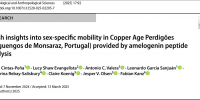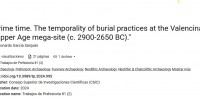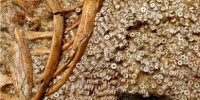Geoarchaeology publishes our paper “Cinnabar provenance of Chalcolithic red pigments in theIberian Peninsula: A lead isotope study”, where we reported lead isotope data for cinnabar from three Copper Age sites and several ore deposits in Iberia. Our research shows that cinnabar was a well-known raw material, mined in the Iberian Peninsula during the Copper Age. The societies established at the northern and centralparts of Iberia employed locally sourced cinnabar in their funerary rituals, but communities settled at the estuary of the Guadalquivir river employed cinnabar of unknown origin, leaving open the possibility of long‐distance cinnabar trade.



